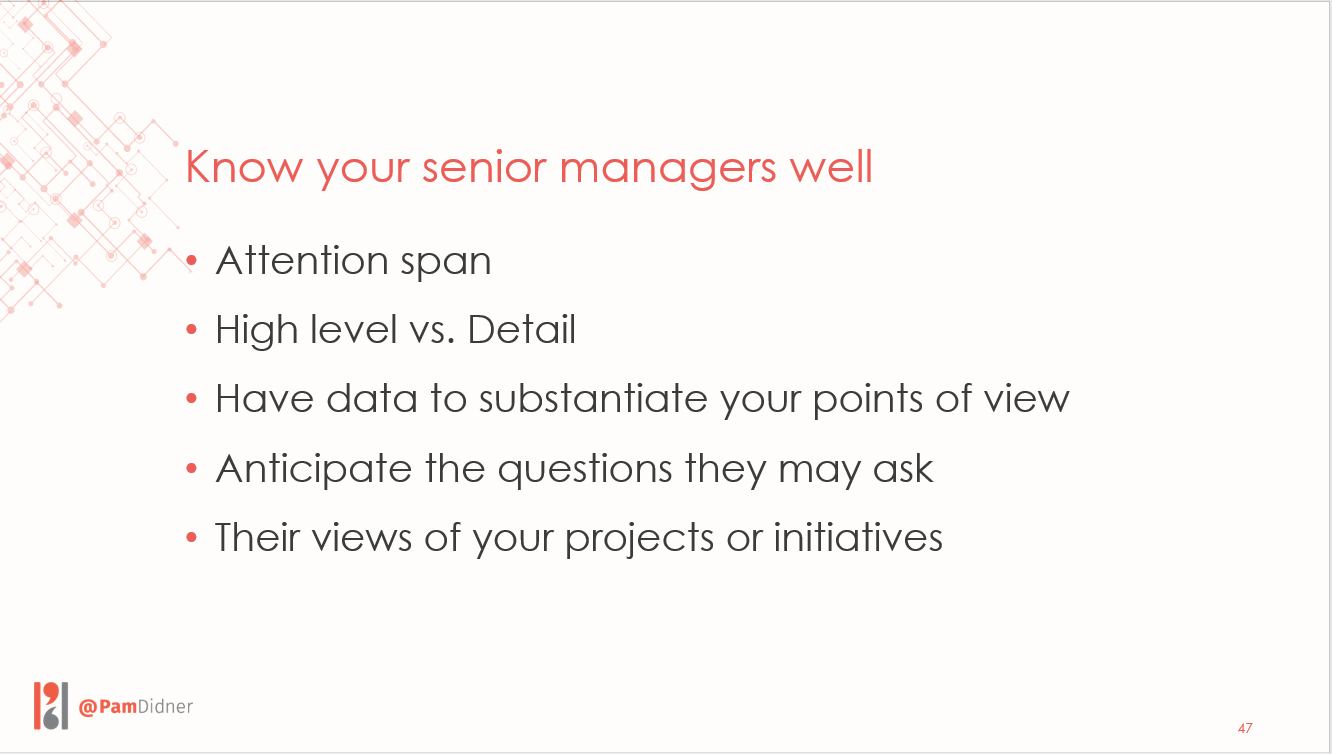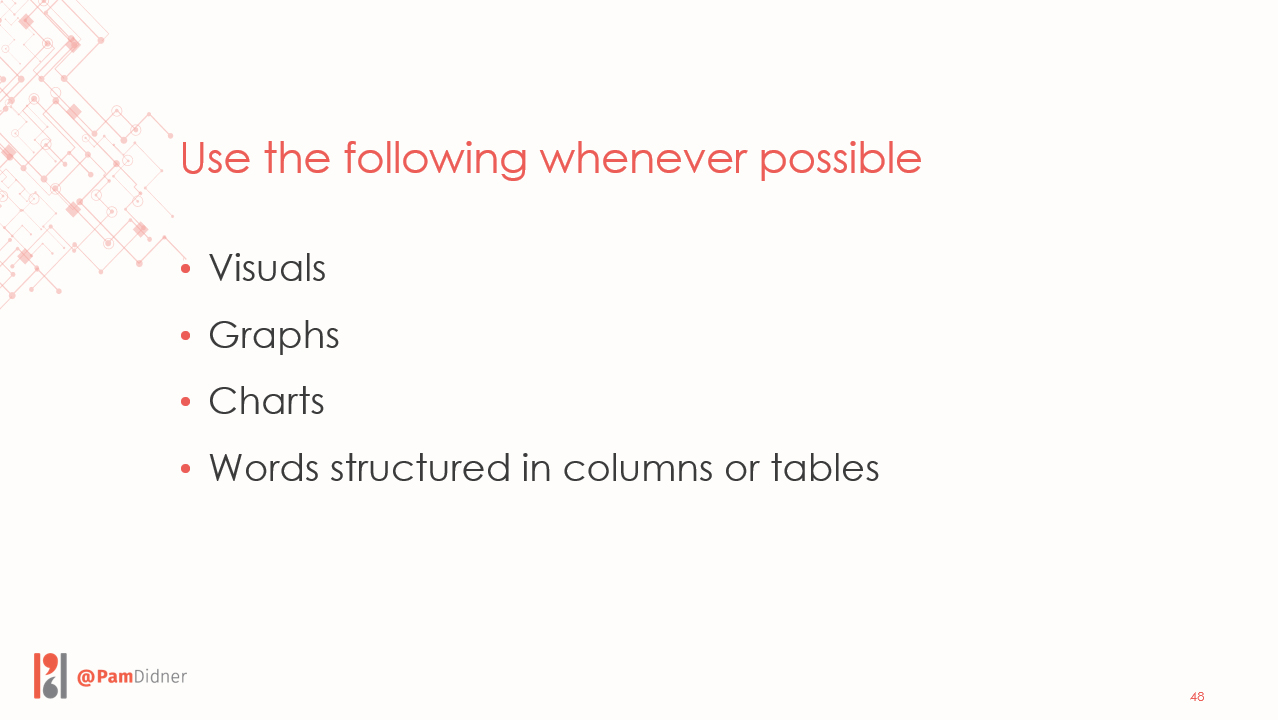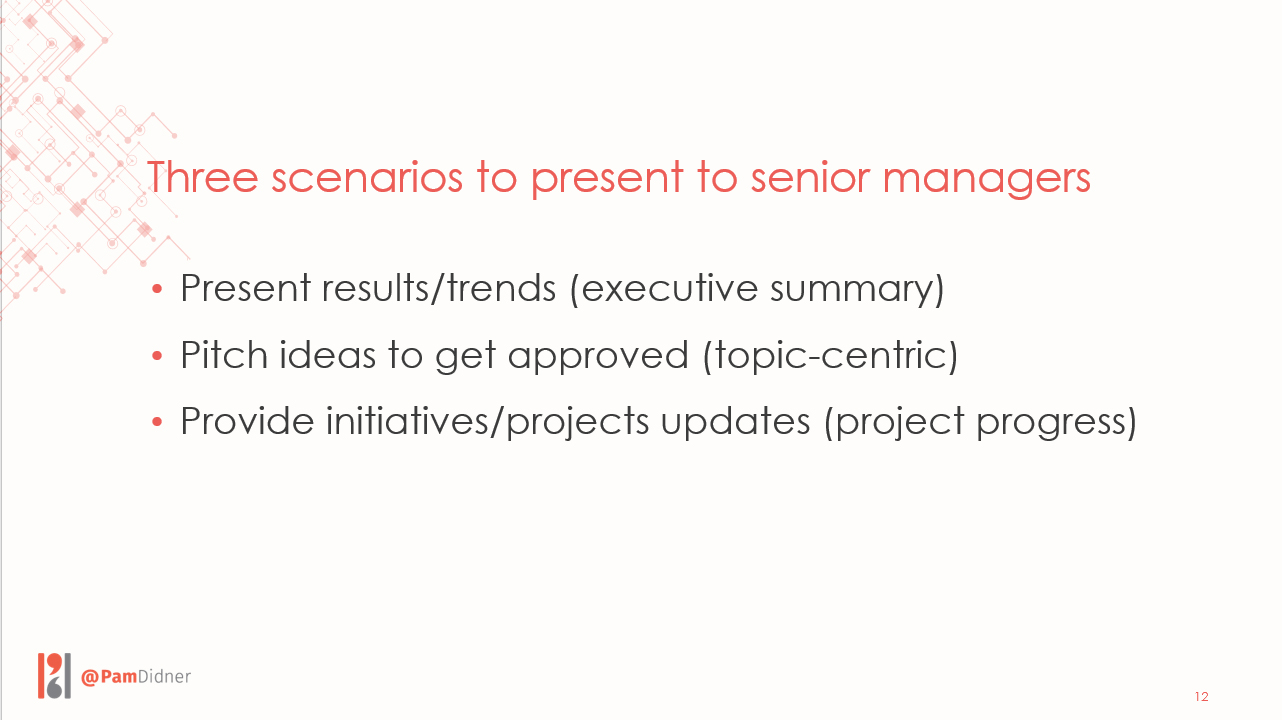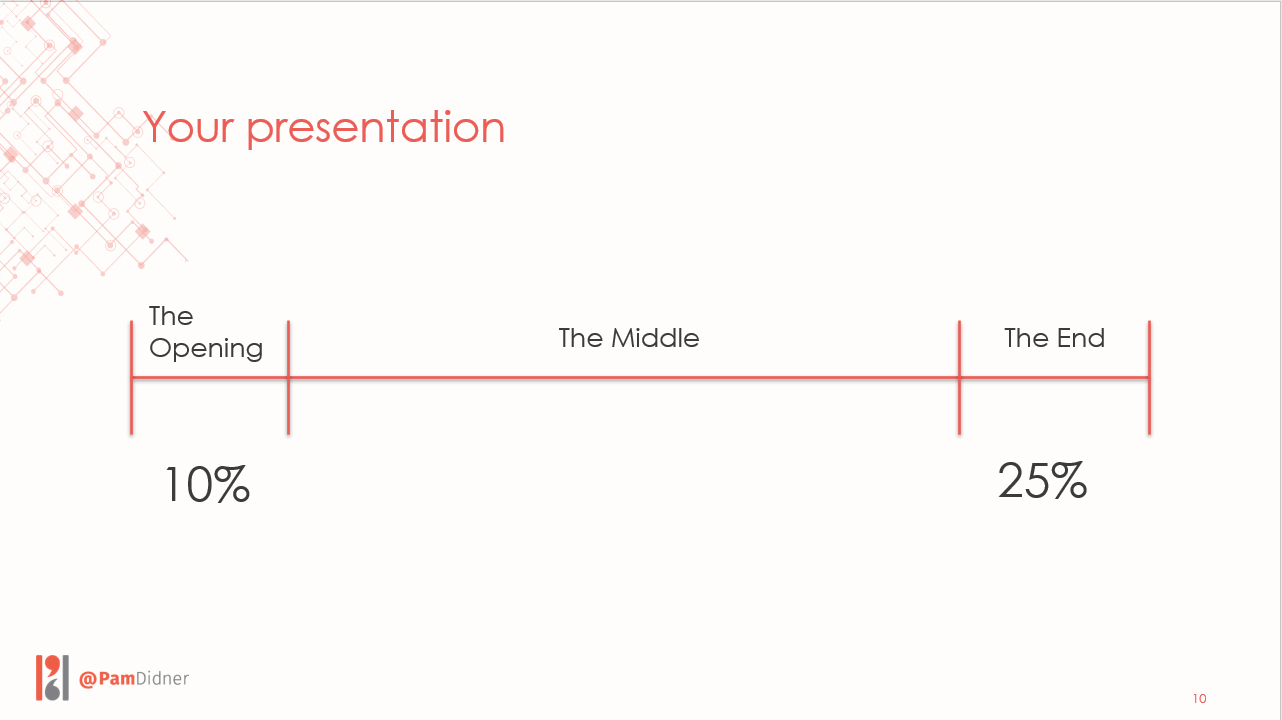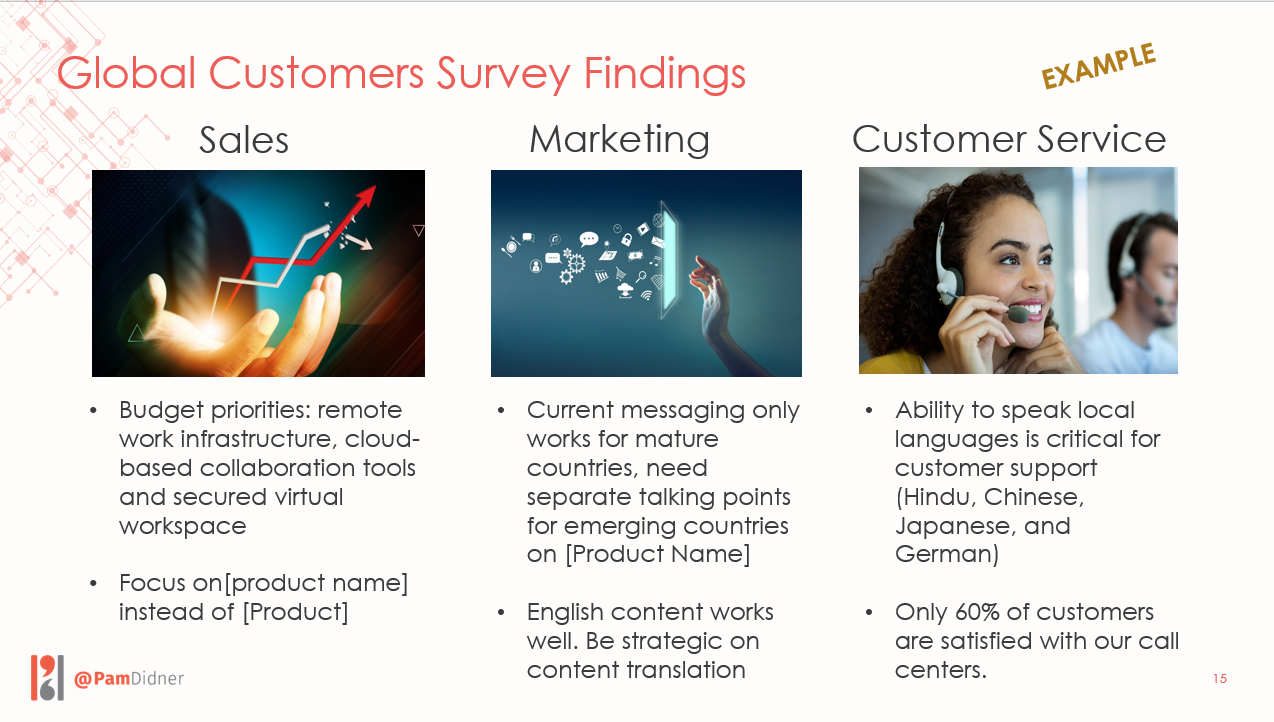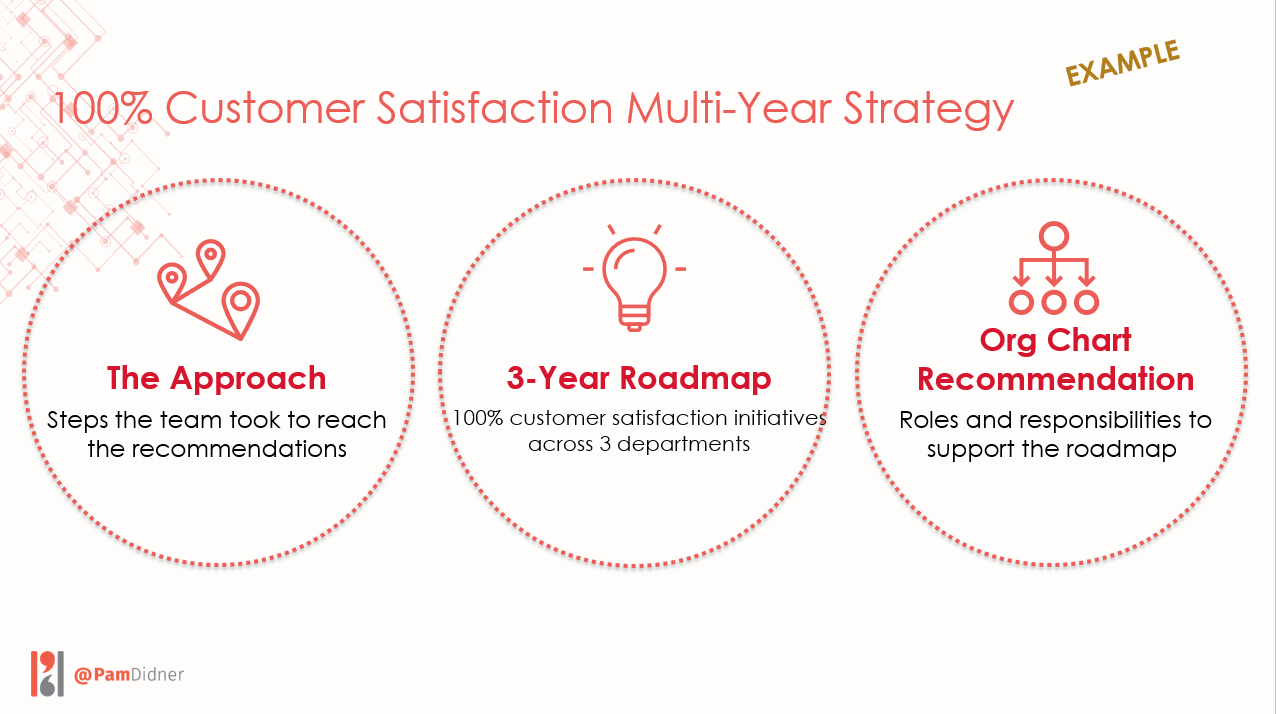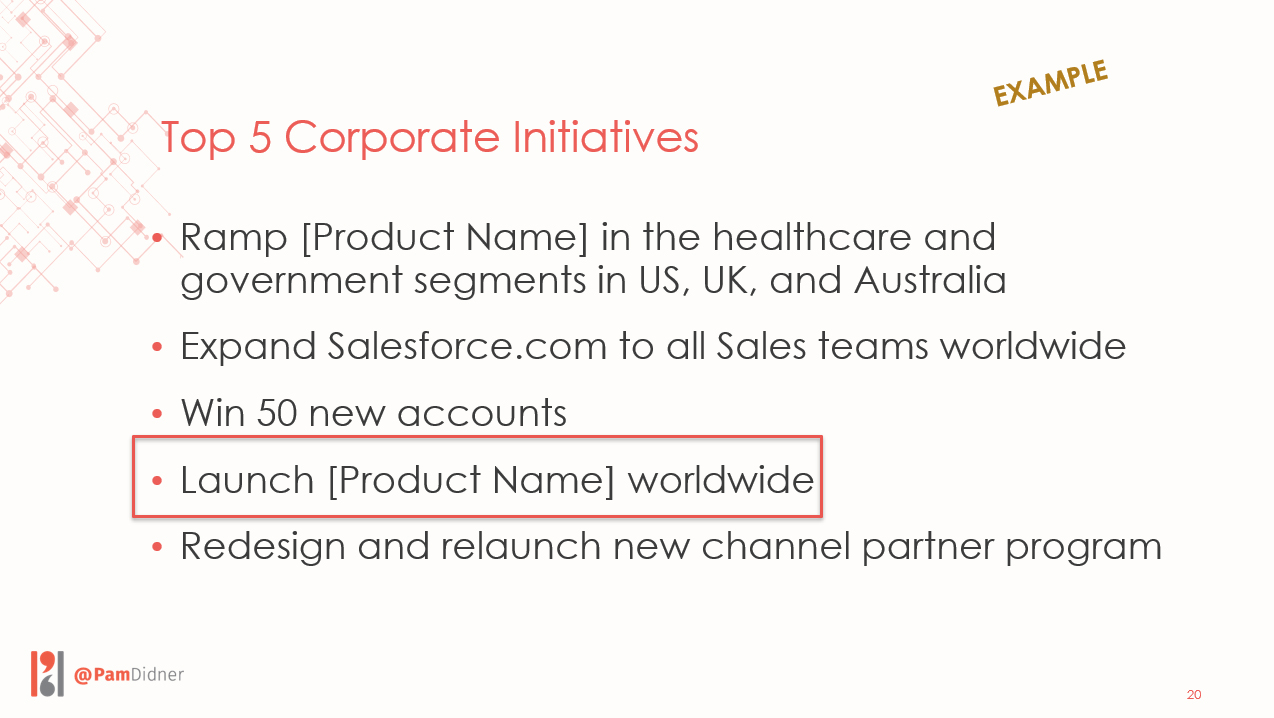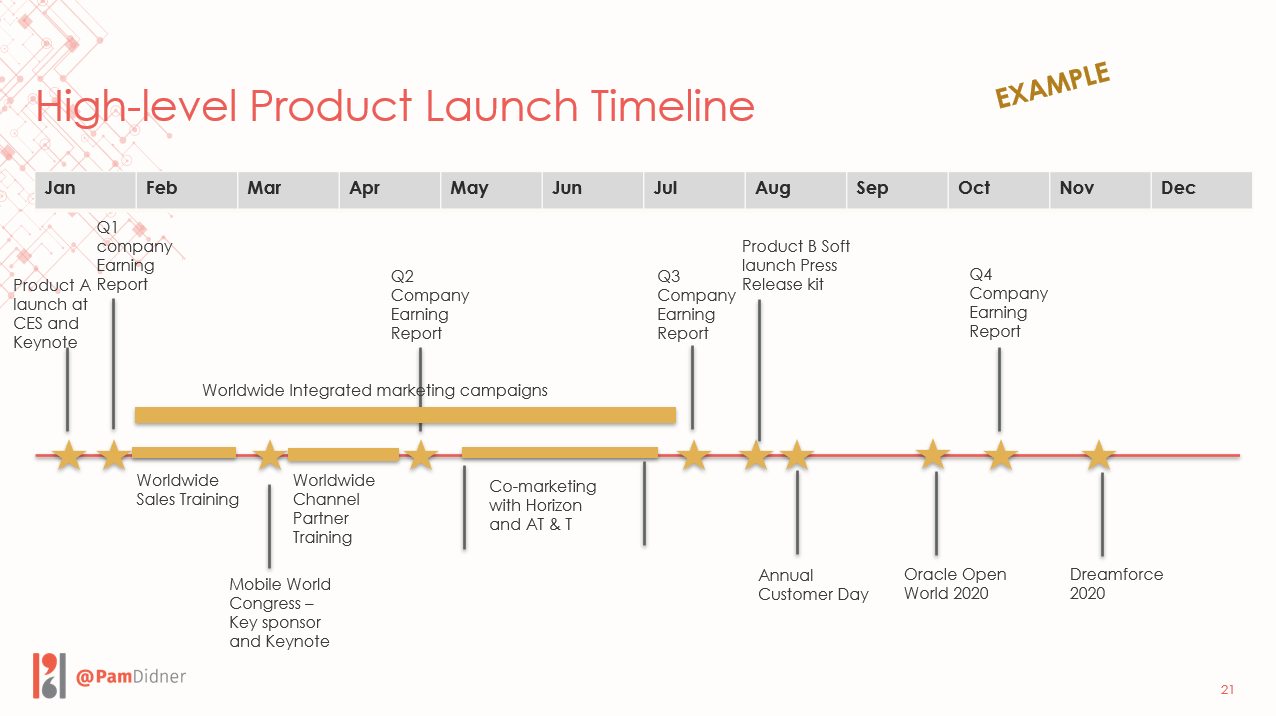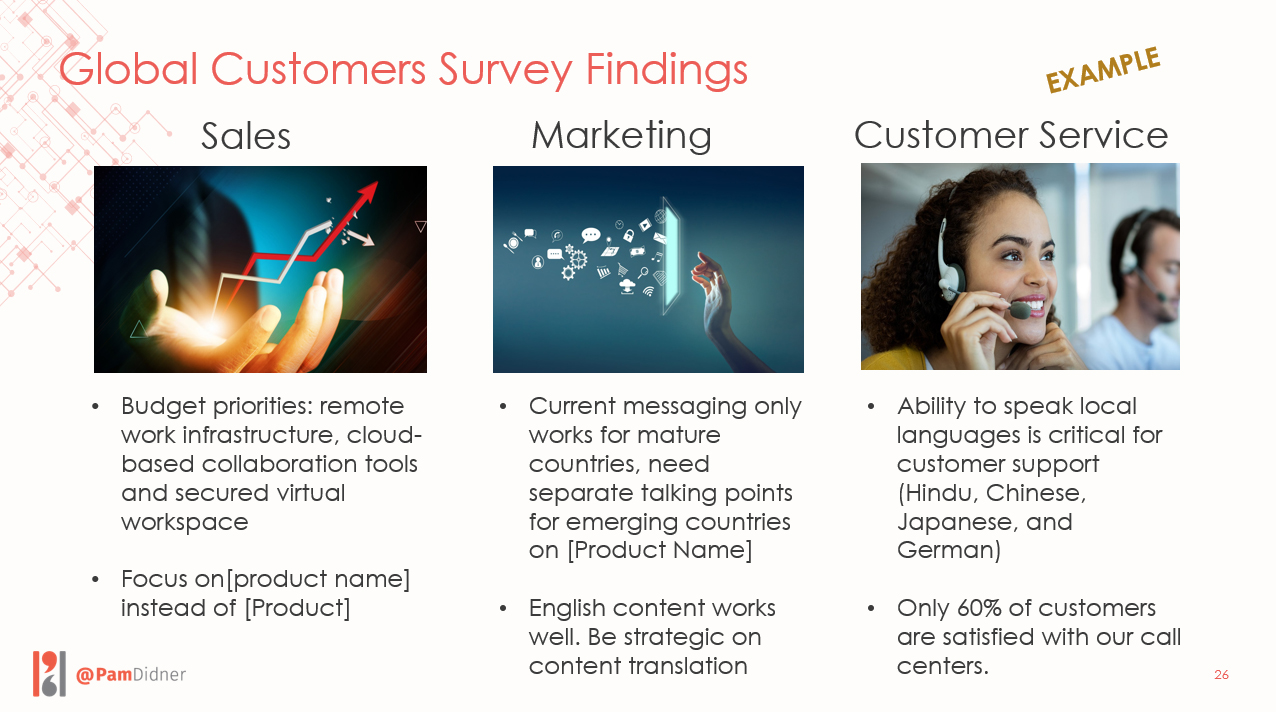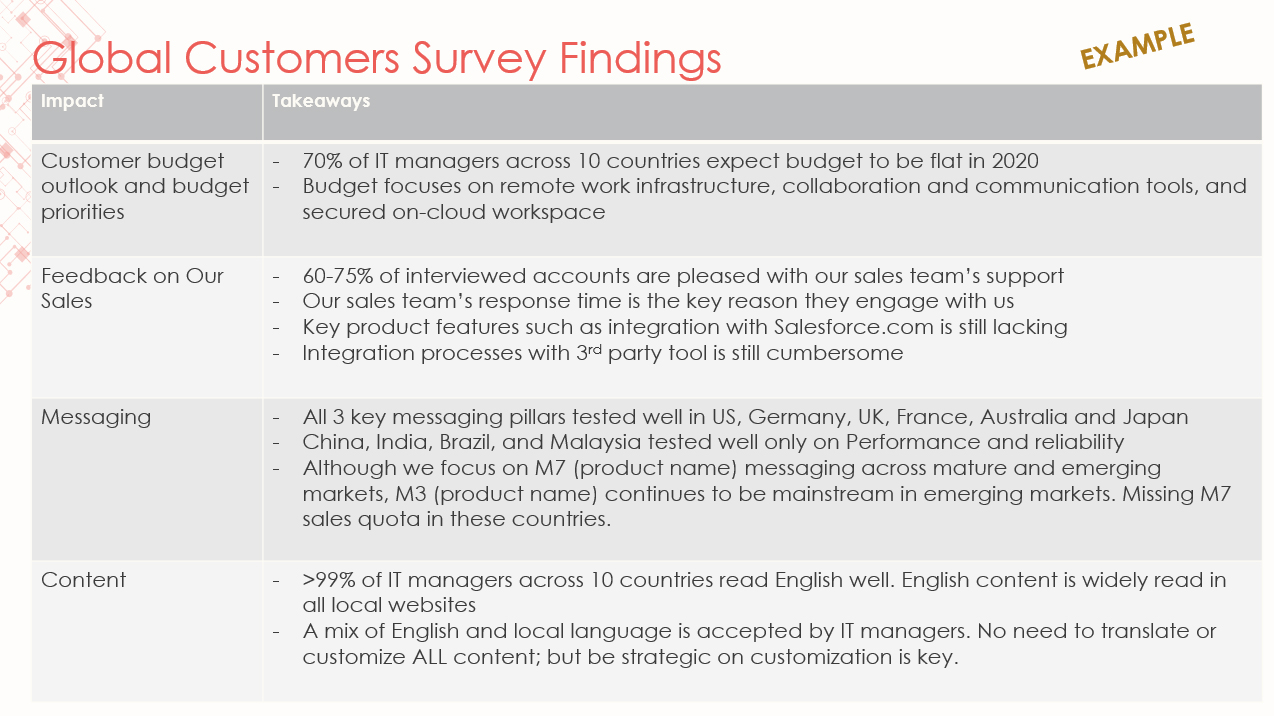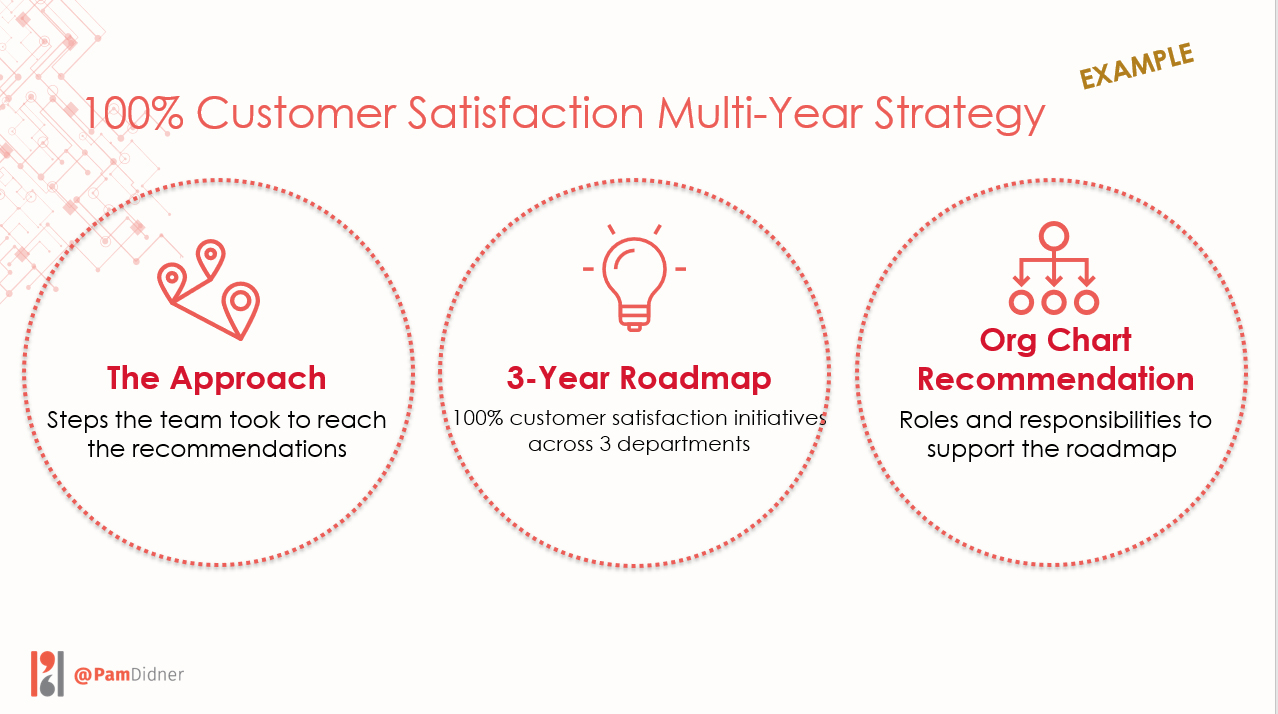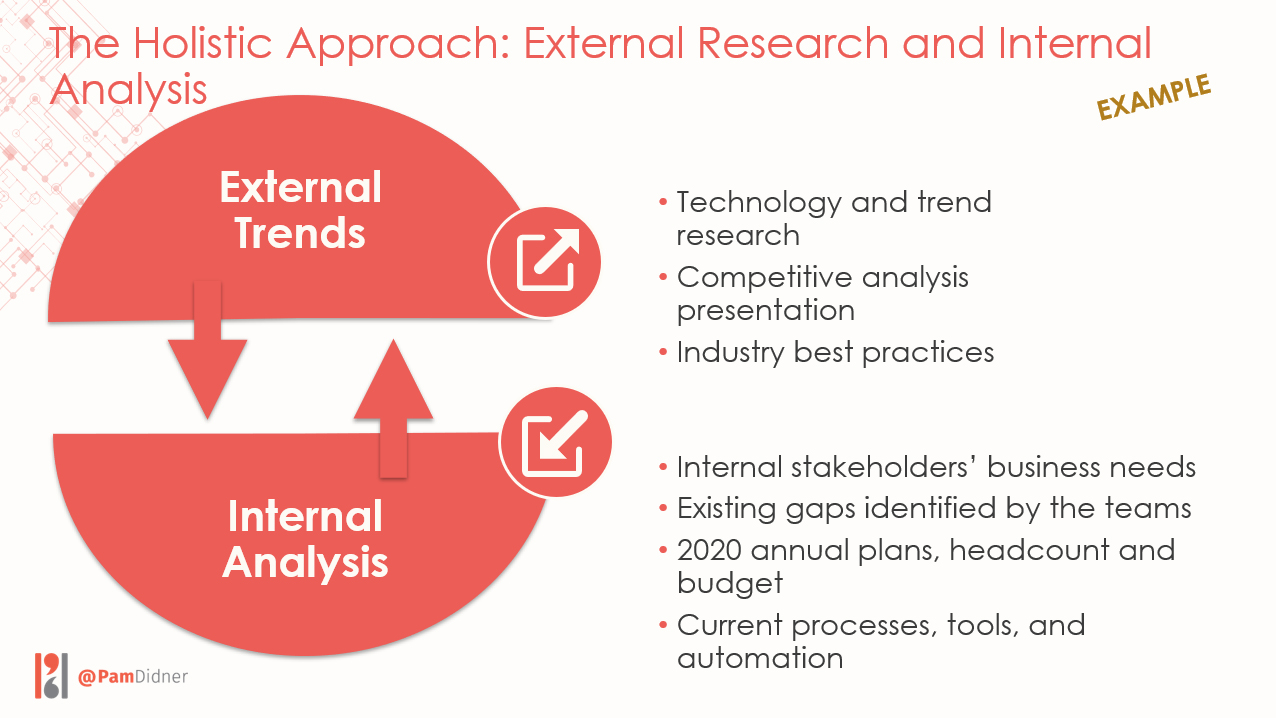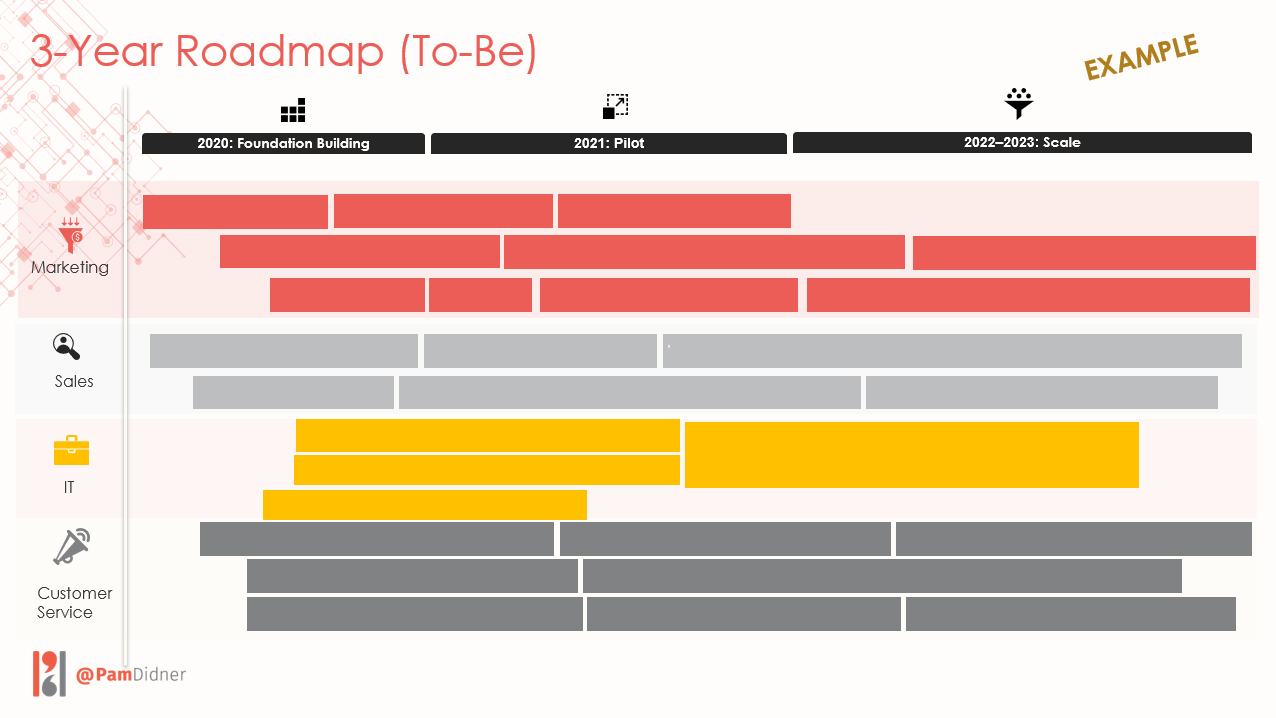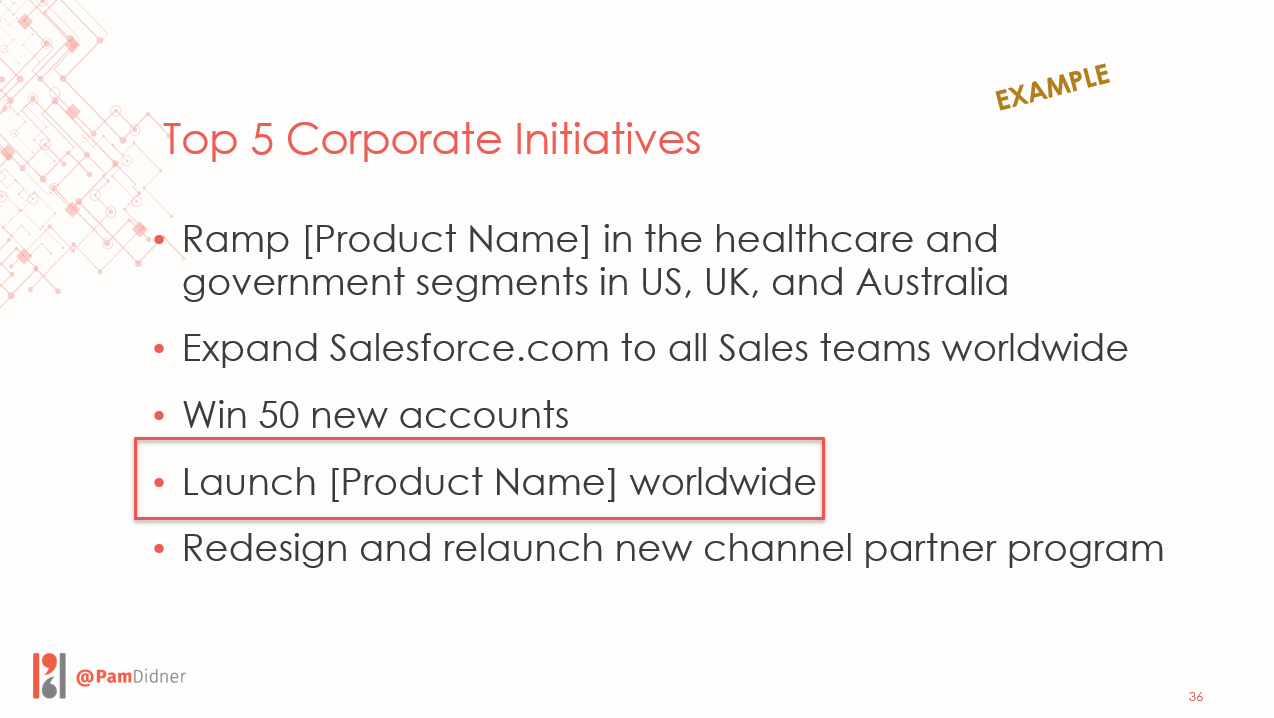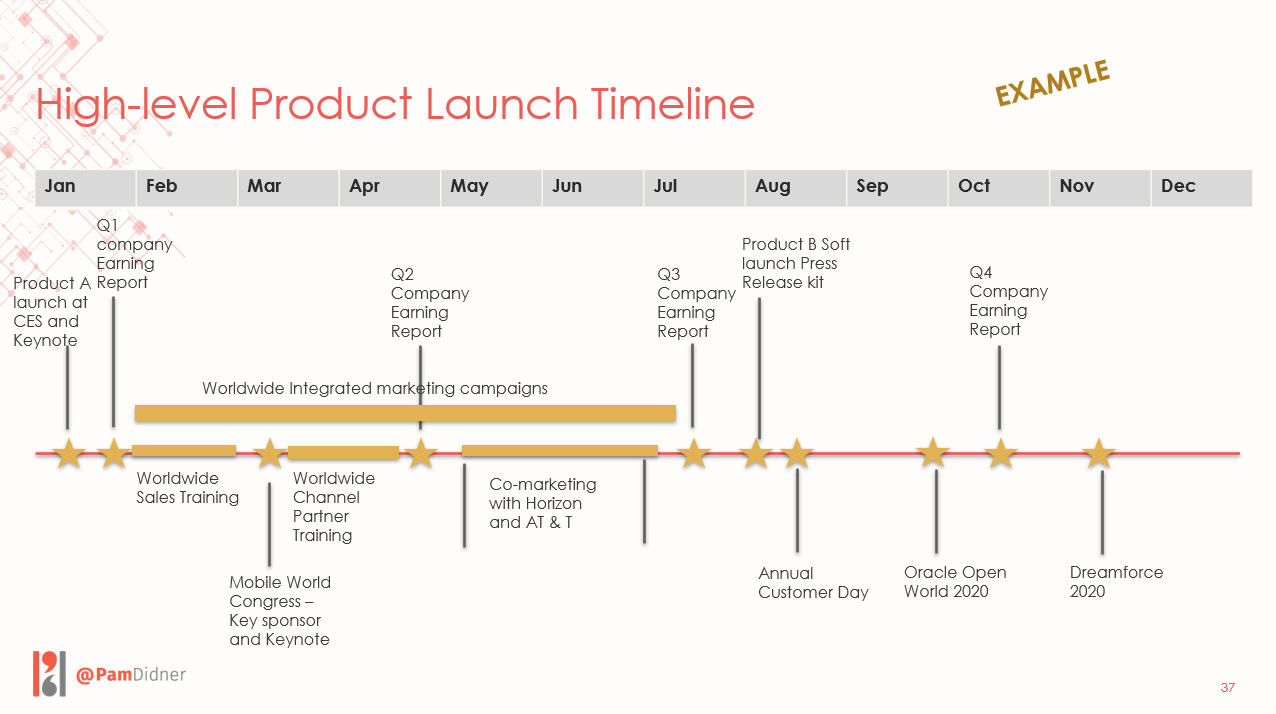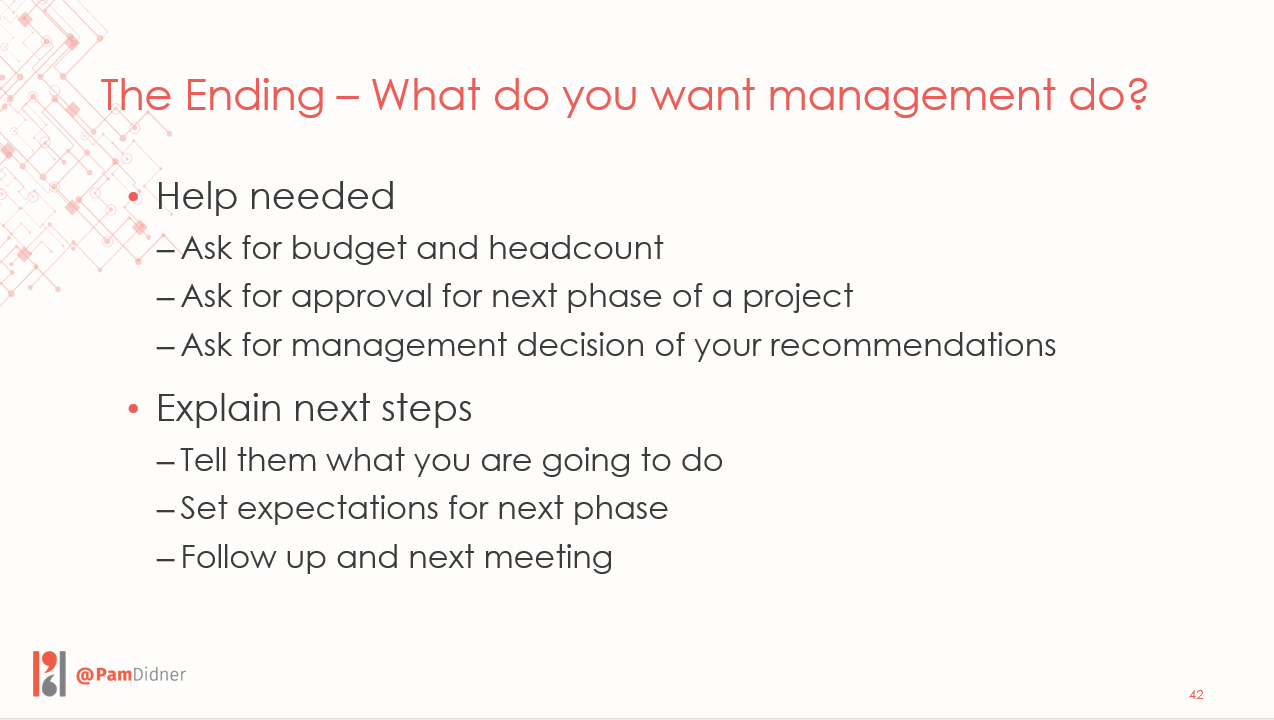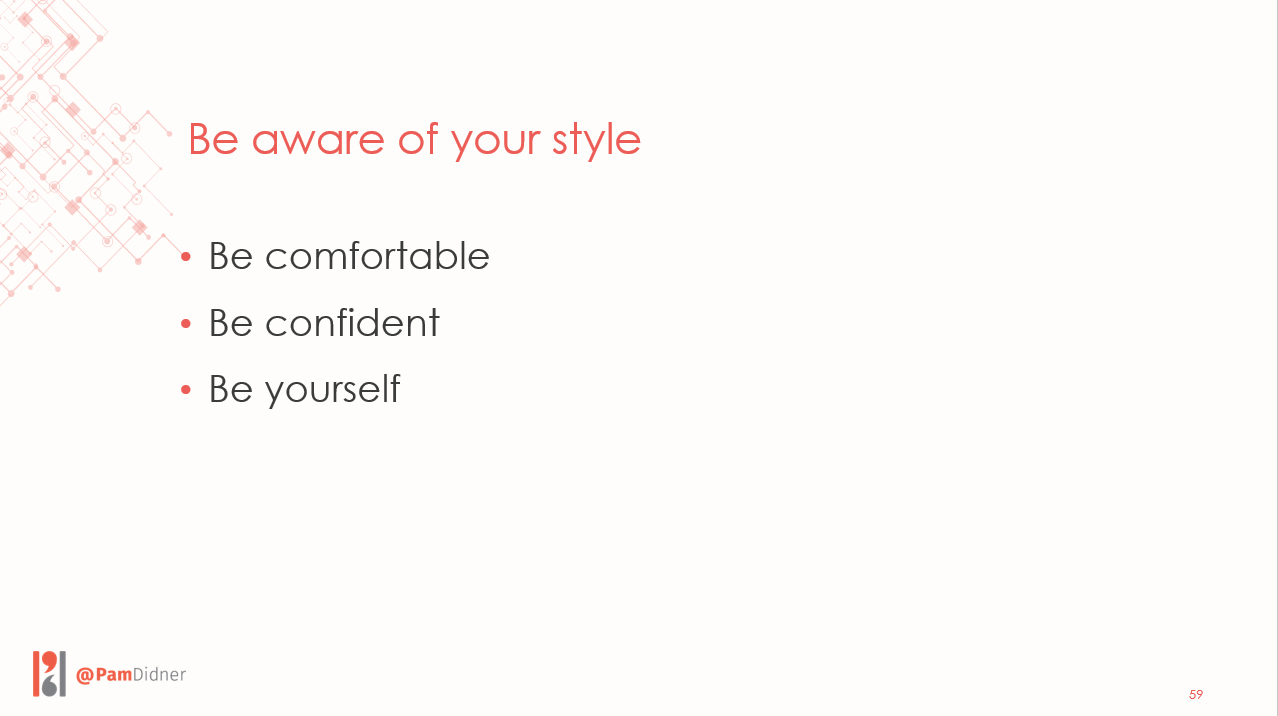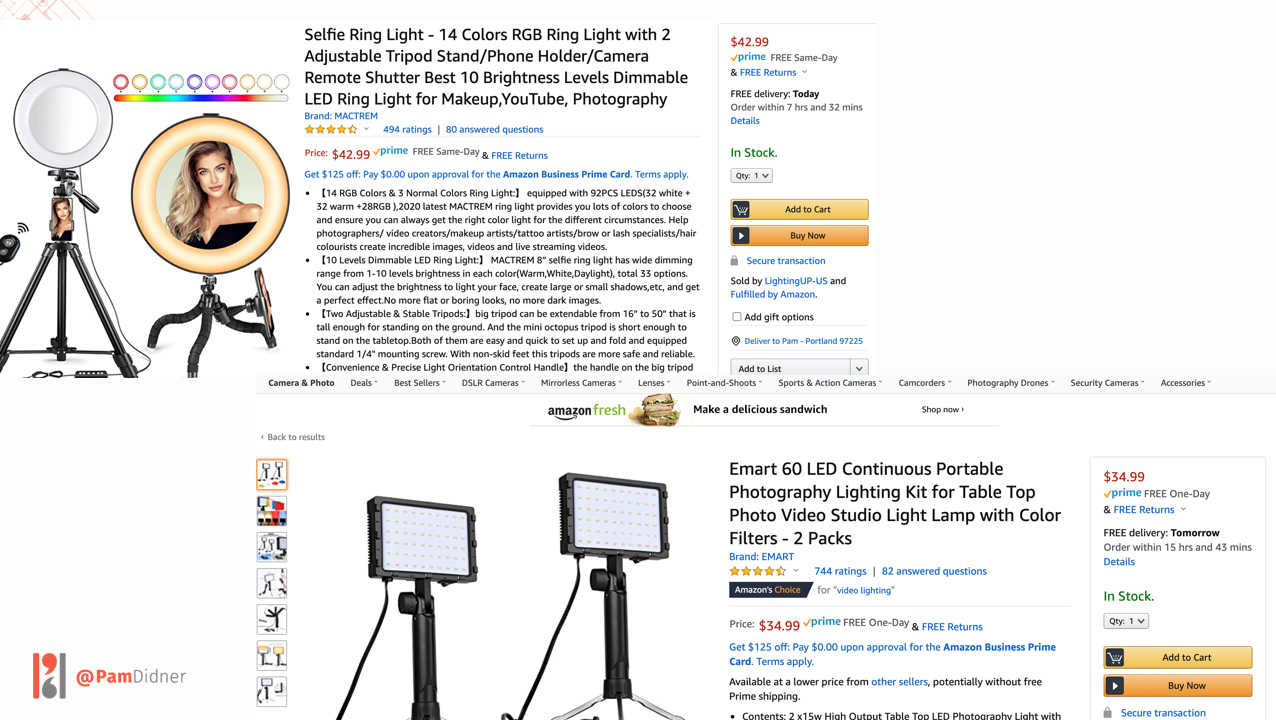
Delivering compelling face-to-face presentations to senior managers is hard. It’s even harder to present the same presentation online when everyone calls in via Zoom, Microsoft Teams, WebEx or other virtual meeting tools.
The key to delivering a solid online presentation is to focus on what you can control:
-
Before you start, understand your audience well
You know this already, the first rule of thumb is to get a solid understanding of who will attend your meeting and who are the decision-makers or influencers. Talk to colleagues or managers who have presented to them. Try to understand the type of presentations they like to see.
You also need to be aware of their current perception of your topics. Do they like the topics? Do they feel it’s a money drain and will likely drag their feet before making a decision? Gauging their perceptions about your topic of the presentation will also help you determine your presentation structure and flow.
Most executives value visuals and graphs more than words. I’d recommend that you determine what you want to convey and translate those thoughts into meaningful visuals and graphs.
A quick note: You’ll need to determine how much information you want to pack into your deck. I’d suggest finding a balance between high-level and detail. When it’s too high-level, they will ask numerous questions. When it’s too detailed, you’ll lose their attention. Finding that balance is a personal judgment call and comes back to how well you understand your audience.
Most importantly, you need to have data to substantiate your claims. This is especially important if you are asking for more budget and headcount. Have 2-3 references to back up your points and recommendations.
Lastly, knowing your executives’ preferences is a key factor in delivering a smooth and effective presentation.
Do your research.
Your Presentation – Content is King
If you have a chance to present to senior executives or C-suite, this is an opportunity for you to shine and for them to take notice of you. It is also a great opportunity to learn from them. Don’t shy away from presenting. If you did not do well the first time, it’s OK. You will learn and do better the next time.
For both new and seasoned presenters, it is critical to think through your presentation flow carefully and strategically.
Remember: It is not about what you want to say, it is about what you want to say in a context that your executives can relate to. Explain your points from their perspectives.
In general, there are 3 scenarios you’ll likely present to senior managers:
1. Present research results or trend findings
2. Pitch specific ideas you want to get approved
3. Provide progress updates on key initiatives
Regardless of the presentation types, each presentation should have 3 acts:
1. The Opening
2. The Middle
3. The End
The Opening
The start should clearly identify “WHY” they are attending your presentation. Are you providing research findings so they can contemplate product roadmaps? Are you pitching an idea to get funded to expand their businesses? Are you just providing key initiative updates so they know what’s going on?
You should make your objectives obvious in the first 10 minutes of your presentation so that there is no confusion about why they are on the call.
Here is the rule of thumb: Allocate 5-10% of your time to set the stage with a quick background, objectives, and agenda. Then focus 65% of the time on your topics, the meat of the presentation, and 20-25% for reinforcing key points, guiding decision-making, and communicating the next steps.
Here are 3 example slides based on the 3 scenarios I mentioned above.
The opening for presenting research results or trend findings
For this type of presentation, I would recommend that you start with an “Executive summary.” Share the results or findings before you do your deep-dive because the executives’ attention focus is better at the beginning of the meeting. Don’t bury the results in the middle or the end. Share the results upfront and get their attention.
Be sure to categorize your thoughts into the way that senior management can understand. They may think in terms of departments, revenue, cost, or risks. Can you categorize your information based on that so it is easy for them to process your information?
See this example:
The opening that articulates specific topics you want to get approved
For this type of presentation, you are asking for something from management. Focus on why this project will benefit them. Give background info and move to your high-level recommendations as the starting point. This sets up the stage for the recommendations and your requests. Explain how can senior executives and the company will benefit if they approve your projects.
See this example:
The opening for updates of initiatives and project status
If you provide any project progress reports or updates, it is important to connect your initiative with corporate imperatives. There are bound to be some big initiatives that companies do every year. Can you connect your project with any of the big initiatives? This should be your first slide and will help your executives connect the dots and remind them why it is important.
Next, I would recommend showing the timeline or project milestones. Once they connect the dots between your project and the corporate initiatives, this timeline or milestone slide gives senior managers a 64,000-foot view right away. Many of them are big-picture thinkers and this will give them context.
See the example:
The Middle
Once you set the stage clearly in the opening, the framework you created will guide management through the middle part of the presentation. If you set up a good framework, the middle part becomes easier to create. However, it still takes time to create slides and convey your points with compelling visuals and graphs.
The middle for presenting research results or trend findings
Based on the slide I shared in the opening section, you’ve already provided high-level findings and categorized those findings by groups that senior executives can understand. Now, you can use your categories to guide how you want to share details. This can lead to key survey questions and results. Based on the results, you can follow up with your recommendations.
See the examples:
The middle that articulates specific topics you want to get approved
Once you set up the 2-3 topics you want to discuss, you can discuss them one by one. The 3-column or 5-column approach is a good way to present your ideas in a way that is easy for executives to follow.
The key is to think through how you want to present the information. Rather than using many words and bullet points, is it possible to communicate your thoughts with graphs, visuals, or charts?
For each slide, understand what you want to convey and the takeaways, then determine what is the best way to show the information. It may take several takes to create the visuals and graphs you like. I always tell my clients to start executive-level presentations early.
See examples:
The middle for updates of initiatives and project status – Articulate the specifics
For progress updates, once you show the overall timeline, you can discuss what has been accomplished in the past several months, what challenges have we encountered, and what are the proposed solutions moving forward.
See the examples:
In addition, you can also present the information by departments or by budget. There are many ways to present the project updates so you need to determine what makes sense for you and your executives. Take the time to “think”, the creation of the presentation will come naturally.
The End
The key question you need to answer is “what do you want your managers to do?” Are you asking for more funding, or for approval for the next steps? Are you just going to tell them what the steps are?
If you need them to make a decision, you need to lead to the decision part starting in the middle and guide them to make the decision at the end. If you do not need them to make a decision, you need to take command and inform them of your next steps. It is OK to tell your executives what you’ll do, after all, you are the expert.
Management tends to ask for more information before they make decisions which can lead to analysis paralysis. If you anticipate that will be the case, you need to share the consequences of not making a decision when you present your deck.
For example, the project would get delayed by certain months or sales would not get the support they need this quarter. Whatever it is, you need to articulate the risks well and set expectations up-front to avoid delays.
Be firm and honest. Don’t shy away from presenting the risks.
Your presentation style
Your style plays a role in your delivery. Everyone’s style is different. I do not ask people to change their styles, but I give tips and tricks to refine and improve it. The best tip: practice and preparation. That’s it! You’ll only be comfortable and confident when you know your slides and subjects well. The best way to achieve that stage is to prepare and practice!
Do several dry-runs and practice in front of a mirror or your peers and managers. You also need to think through the types of questions that executives may ask. In addition, you need to know the details well enough to talk about key points or challenges intelligently. Bring team members to support you to answer technical questions if necessary.
Your style matters, but a solid logical flow of presentation can guide your presentation style and boost your confidence. A well-structured presentation shows that you know your stuff.
Note: It is nerve-wracking to present in front of executives. As I said, practice is the best way to minimize nervousness. What if you cannot answer executives’ questions on the spot? Well, it is totally OK to tell executives that you don’t have the answers and you’ll get back to them after the meeting.
The View of Your Workspace on Webcam
Your background and lighting play a critical role when you present. Imagine you are putting on a show, so make sure that the background is clean and people can see “You.” Since working from home is a new norm, I would recommend you invest in ring lights or cameras or photography lighting so that people can see you nicely on webcam.
In general, these two options of Selfie Ring light and portable photography lighting are pretty popular. I prefer the ring light, the other one is too bright, but you should try both and see which one works for you.
When you present, you should also determine if you want to stand up or sit down. I prefer standing. I feel that I can move my hands more freely. Well, if you think about it, you stand up when you present in a conference room. You can try to sit down or stand up in front of your webcam recorder, then determine which option looks better for you. The important part is that you need to be comfortable.
Another thing is to use your webcam, don’t present with only audio. Show your face and let them know how confident and passionate you are about your topic!
With remote working, people are more forgiving with background noise. However, if you are presenting to your executives, please ensure that background is quiet and turn your phone to the airplane mode. If you do not like to show your messy room, I’d recommend that you use a virtual background to disguise it.
You can do it
As a virtual presenter, you command less of your audience’s attention. Working from home presents many distractions to our listeners, such as dogs barking, babies crying, doorbells ringing, and even WiFi problems. If they don’t turn on their webcam, you cannot gauge their reactions and emotions. It’s hard, and that is why content and preparation matter. Content is king!
The more you present to your executives, the better you will get over time.
Focus on the flow and the quality of your content, practice, and prepare your presentation, and create a nice workspace to present.
Focus on what you can control.
Don’t stress about the rest of it. #cando
I help marketers compile their executive-level presentations, create their annual marketing strategy decks, and facilitate planning workshops.
I love to make my clients look like rock stars. If you have any needs, please schedule a free call.
—————
Keep learning about marketing, sales, ABM, and technologies. Read some of my previous blog posts which will help you to grow; no matter how experienced you are.
A Complete Guide to Account-Based Marketing (ABM) For Marketers (Examples Included)
Important Templates You Need To Update Your Marketing Plan AGAIN Post Covid-19
—————
Love listening to a podcast? Subscribe to my B2B Marketing and More podcast on your favorite podcast platform or leave a 5-star review and subscribe to Apple Podcasts.
If you prefer watching a video, I also have a YouTube Channel, check it out and subscribe.

